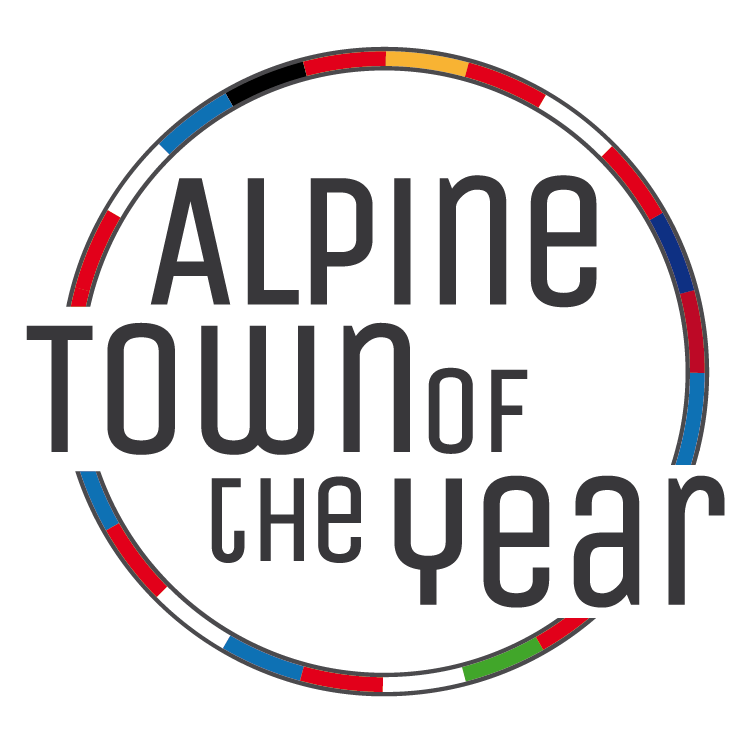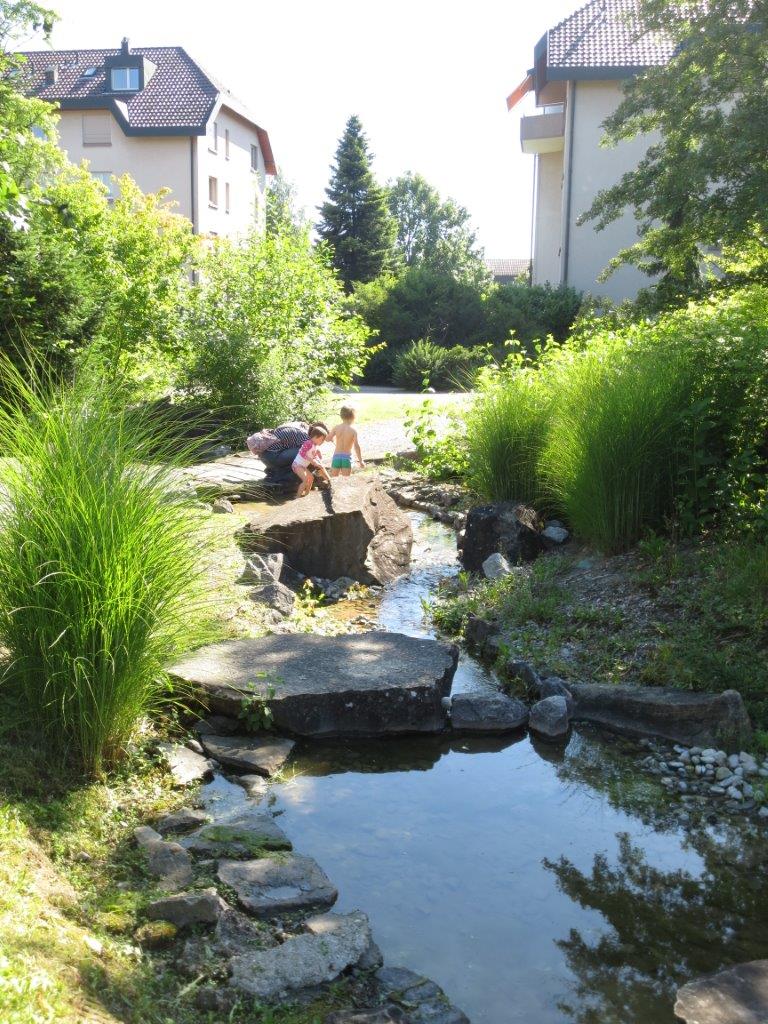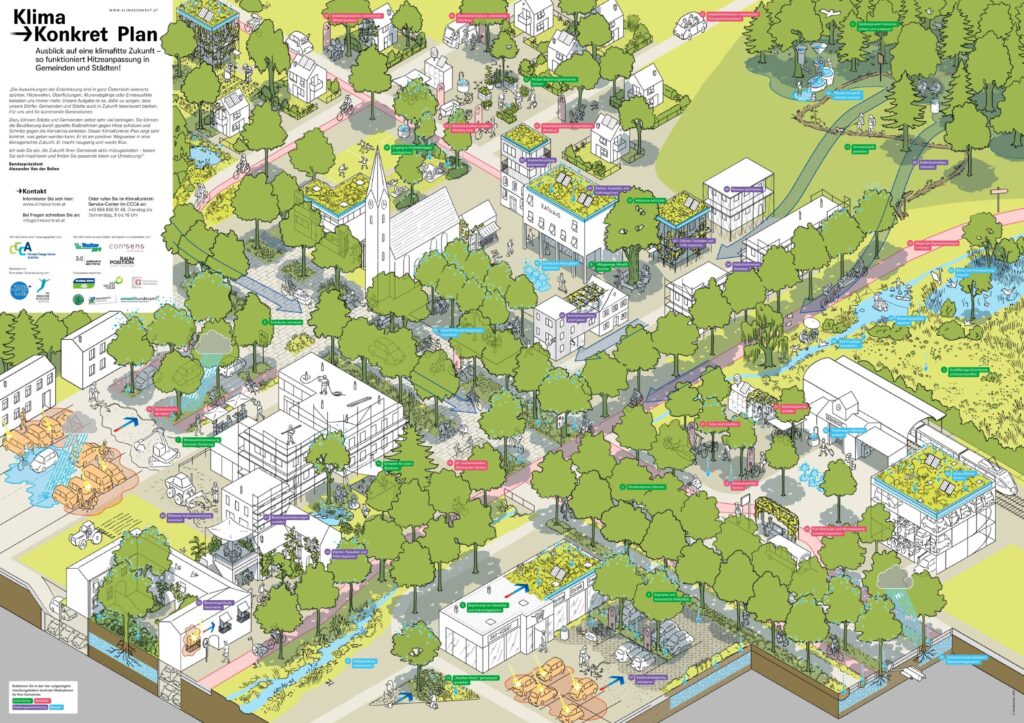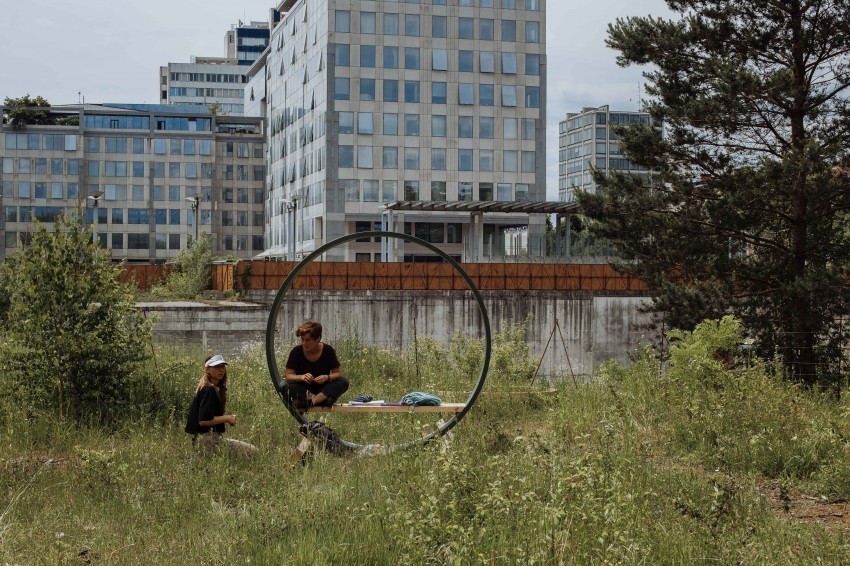Effective climate measures
Listening, putting yourself in the shoes of others and taking their needs into account: this is how citizen participation can work. This was a finding of the online event at the end of the project “Climate Action in Alpine Towns”, where the eight participating towns showed which low-threshold climate measures they have launched. Experiences from other climate change adaptation initiatives complemented the programme.
“Cycle paths have to be built invitations”, explains Ingrid Fischer, 2nd Mayor in Sonthofen/DE. The Alpine town has been following this motto not only since its participation in the “Climate Action in Alpine Towns” project. Sonthofen wants to reduce car traffic and thus CO2 emissions by increasing cycling, which is why they are taking further steps towards cycling mobility as part of the pilot project. The city of Belluno/IT dedicated itself to the climate-friendly redesign of public spaces, especially schools. Students, in close cooperation with the public administration, did their own work, designed and planted school gardens and learned useful things about green spaces, increasing the volume of insects and climate protection. The Slovenian town of Idrija put nature in the spotlight: A vacant mining site became a jointly designed creative centre, a venue for many events and a meeting place for all.
Details on these measures and the partner towns Annecy/FR, Brig-Glis/CH, Chambéry/FR, Trento/IT and Tolmin/SL can be found here in texts and videos.
Sponge city and urban sustainability
Ivone Pereira Martins from the European Environment Agency reinforces the actions of the Alpine towns: “There are no small projects. When something is implemented with a school or a smaller community, every activity counts.” She sees four areas for more “urban sustainability” and where a town needs to take action on climate change: Energy, Buildings and Design, Nature in the City, and Resilience.
[Download Presentation]
Stefan Hasler from the Swiss Wastewater Association impressively illustrated the concept of the sponge city in Basel/CH. He spoke, for example, of the so-called no-regret strategies, i.e. measures that can already be implemented now without all the dimensions of future climate change being known. “Sponge city is ingenious,” Stefan Hasler is enthusiastic. “Because the same measures can kill several birds with one stone. Flooding can be avoided through better surface runoff, there are fewer heat islands and more biodiversity, residential quality is promoted and a valuable contribution is made to net zero.” He is convinced that municipalities should lead by example and made an appeal to those present: “Let’s do everything we can to make our cities more resilient and liveable with blue-green infrastructures!”
[Download Presentation]
Participation & creative togetherness
Afterwards, four short inputs focused on climate change adaptation in Austria. Nathalie Aubourg presented “Climathon” (www.climathon.at). “In this exciting ‘24-hour idea marathon’, participating citizens work together to develop solutions for how a city can counter climate change,” said Aubourg. The initiative takes place in around 60 countries and 160 cities worldwide. In Austria, for example, the Climathon has already been held four times in Graz.
[Download Presentation]
In Austria, there are a total of 80 so-called climate change adaptation regions (“KLAR! regions”). They face the consequences of climate change together and implement projects within the framework of the KLAR! funding programme (www.klar-anpassungsregionen.at), explains Martina Offenzeller. The measures range from tree planting campaigns and crisis communication training for regional actors, climate-friendly renovations of public buildings or information brochures on climate change for children.
[Download Presentation]
The KlimaKonkret initiative (www.klimakonkret.at) also supports municipalities and cities in actively working towards a future-oriented and liveable vision – against the backdrop of the effects of climate change. “We know the complex processes in municipalities,” explains Executive Director Pia Knappitsch. “These are often slowed down because there are no clear visions.” At KlimaKonkret a network of experts from different fields helps to dream these visions for change together. In 2020, they drew up a plan, which uses the example of a prototypical municipality to show what concrete possibilities are available for climate change adaptation in the four fields of action: green spaces, mobility, climate-friendly building and settlement, and water. The very appealing illustrated plan shows that there are many screws that can be turned and that the right “mix of measures” leads to positive synergy effects.
[Download Presentation]
A helpful hub for the topic of climate change is also the CCCA, the Climate Change Centre Austria (www.ccca.ac.at). “We are a contact point for research, politics, the media and the public for all questions concerning climate research in Austria,” explains Katrin Brugger. “Climate research must not be limited to natural sciences. It is about tourism, health, infrastructure, ethics, economics, jurisdiction, digitalisation and much more.” The CCCA is therefore in constant exchange with experts from all directions.
Justice for nature
The initiative “Krater” (www.krater.si), a kind of mobile creative production laboratory in Slovenia, rounded off the webinar. Danica Sretenovic and Gaja Mežnarić reported on a fallow area in Ljubljana where the “Palace of Justice” was to be built. The initiative lobbied to leave the area as a free green space and important corridor for flora and fauna. They showed with scientific data and facts that sealing happens very quickly, but then it takes another thousand years for the soil to regenerate. Krater pleads for a different kind of “justice”, justice for nature, animals and plants. Their efforts remained fruitless, the green space will give way to the Palace of Justice. From their point of view, it should now serve as a monument – or rather a memorial – that soil is valuable. Not only in Slovenia, but in all Alpine countries, where valuable areas are sealed and built on every day.
[Lectures on the strategies of Krater]
The project “Climate Action in Alpine Towns” was implemented by the Alpine Towns of the Year Trento, Annecy, Belluno, Chambéry, Sonthofen, Tolmin, Idrija and Brig-Glis, coordinated by the Alpine Town of the Year Association with financial contribution of the Swiss Federal Office for Spatial Development in the framework of the Swiss Presidency of the Alpine Convention and with the support of Germany, Austria, Slovenia, Norway, the European Commission and the Alpine Convention in the framework of the International Monitoring Group of the Territorial Agenda.




